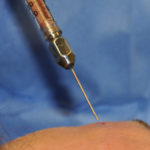
Despite what is written or purported as medical fact, much of the science of fat grafting is unknown. This can be seen in the large number of fat grafting techniques used that propose numerous methods for harvesting, processing and injection techniques. Manufacturers have a vast array of devices that are now available to aid in every step of these techniques. Some of these preparatory devices are automated machines that can cost close to six figures while others are simple mechanical devices that cost but a few hundred dollars. While some of the basic concepts behind these devices certainly seem like they should be true (e.g., fat concentration and isolation), how useful any of these devices are is not yet conclusively clear.
In clinical use, the amount of fat injection graft take is hard to measure other than by gross visual assessment. So claims as to how well anyone’s injection methods works are level 5 evidence based otherwise known as anecodal or observational. Unless one is looking at a minimum of six months follow-up or, even better, a year, the evidence of fat volume retention is not convincing. Does the take of a fat graft mean that the transplanted adopicytes have survived or that stem cells or preadipocytes have converted and ‘volumized’? Or is it some combination?
Because there are many variables in fat injection grafting, most of which are not well understood, I prefer to keep the technique simple using the basics of DPI. (donor, processing and injection) Facial fat is both structurally and physiologically different than body fat. It is unknown what body donor areas would provide the best match for survival in the face. On a practical level, donor sources are the abdomen, flanks, thighs and knees. Based on cell size, one would assume that smaller-sized adipocytes from the inner thighs, knees or flank are a better donor source for use in the face. Grafting like to like would seem to make the most sense. But that supposition has yet to be proven. The face requires considerably less volume than the breast or buttocks so the inner thighs and knees usually offer an adequate donor source.
Preparation of fat has been done multiple ways and better isolation of viable cells vs fluid is the goal. Whether it should be done by centrifugation or simple washing through a sieve or filter is a matter of debate. I still prefer sieve preparation over centrifugation as it eliminates steps and time from donor site to the face. The shortest time between harvest and implantation reduces the anoxic (lack of oxygen) period of the graft, which is an often overlooked factor in fat graft survival. It is critical for every other tissue in the body that is transferred so why would free fat be any different? It should be but a few minutes out of the body for the graft.

Dr. Barry Eppley
Indianapolis, Indiana


